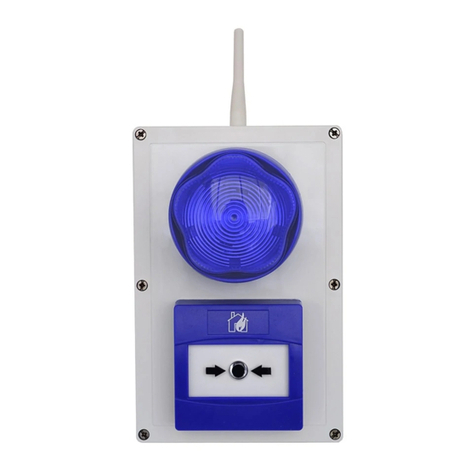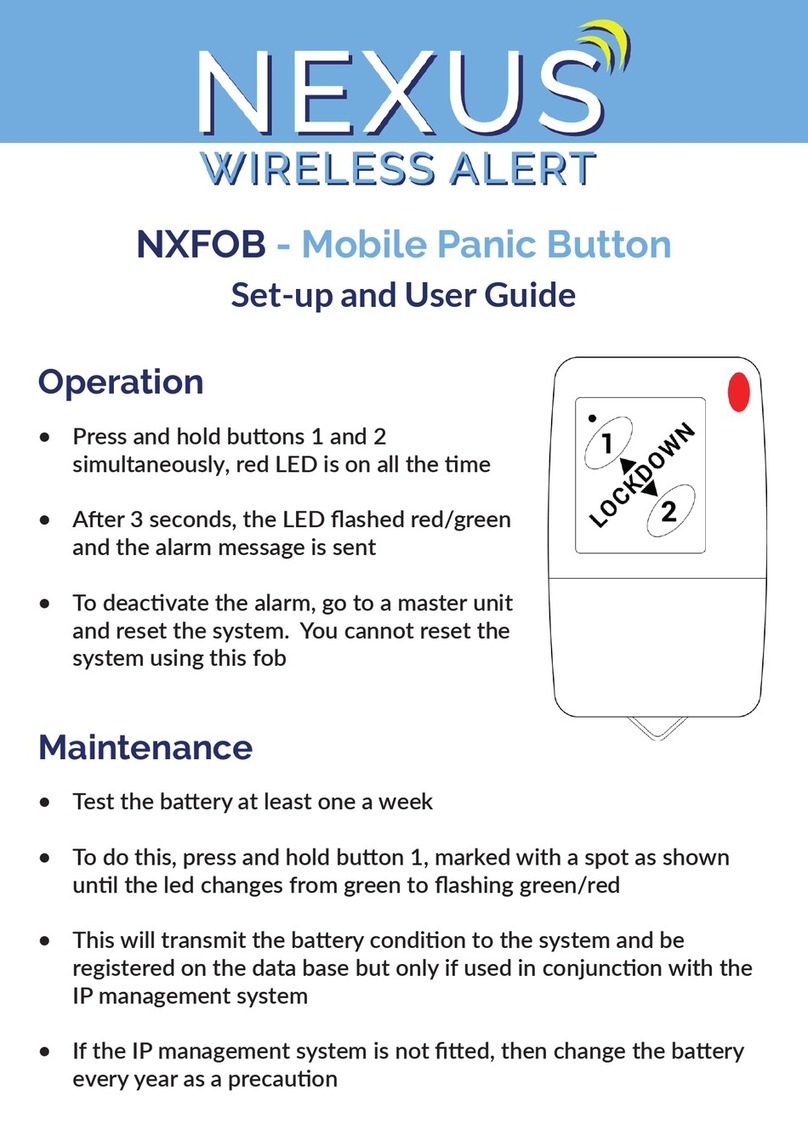
In order to “Apply” all changes (at once) and store the new Setup
values to EEPROM, press Memory button and hold it down, until
displaying of “bottom segments” changes to “upper segments”.
This takes about 5 seconds. Then release the Memory button and
the Parameters are saved. The device will reset itself and re-start
with updated parameters loaded from EEPROM. (Shows “HI” on
display shortly after Reset).
If the Memory button is pressed and released before the “upper
segments” are displayed, then the device makes “Cancel” operation,
ignores the Parameter changes and will self-Reset and restart with
the old parameters. No changes will be saved.
Tip: if you need to RESET the Unit, just hold Memory or any of the
4 buttons until Display wakes up, then press the Memory button
repeatedly to “Cancel” the operation.
Parameters available:
Name
displayed
Range Default
Value
Meaning
SI 1..32 1 Site
SU 1..8 1 Subnet
Un 1..64 1 Unit
Cr 0/1 1 CALL Repeater, 1=Enabled / 0=Disabled
CP 3..99 30 CALL Period, values 3..50 are [minutes],
values N=51..99: time = 50+(N-50)*5 minutes
MU 0/1 0 Master Unit, 1=Enabled / 0=Disabled
SP 0/1 1 Serial Port, 1=Enabled / 0=Disabled





























